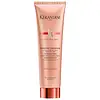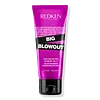What's inside
What's inside
 Key Ingredients
Key Ingredients

No key ingredients
 Benefits
Benefits

 Concerns
Concerns

 Ingredients Side-by-side
Ingredients Side-by-side

Water
Skin ConditioningC13-16 Isoparaffin
SolventDimethicone
EmollientPolyacrylamide
C13-14 Isoparaffin
EmollientPhenoxyethanol
PreservativeAmodimethicone
Laureth-7
Emulsifying2-Oleamido-1,3-Octadecanediol
Skin ConditioningBenzyl Salicylate
PerfumingTrideceth-5
EmulsifyingArginine
MaskingGlutamic Acid
HumectantChlorhexidine Digluconate
AntimicrobialBenzyl Alcohol
PerfumingSerine
MaskingHydroxypropyltrimonium Hydrolyzed Wheat Protein
Skin ConditioningTrideceth-10
CleansingLinalool
PerfumingXylose
HumectantAlpha-Isomethyl Ionone
PerfumingGeraniol
PerfumingCitronellol
PerfumingCinnamyl Alcohol
PerfumingParfum
MaskingWater, C13-16 Isoparaffin, Dimethicone, Polyacrylamide, C13-14 Isoparaffin, Phenoxyethanol, Amodimethicone, Laureth-7, 2-Oleamido-1,3-Octadecanediol, Benzyl Salicylate, Trideceth-5, Arginine, Glutamic Acid, Chlorhexidine Digluconate, Benzyl Alcohol, Serine, Hydroxypropyltrimonium Hydrolyzed Wheat Protein, Trideceth-10, Linalool, Xylose, Alpha-Isomethyl Ionone, Geraniol, Citronellol, Cinnamyl Alcohol, Parfum
Water
Skin ConditioningPropylene Glycol
HumectantTrisiloxane
Skin ConditioningHexylene Glycol
EmulsifyingDimethicone/Vinyl Dimethicone Crosspolymer
Skin ConditioningPolyacrylamide
C13-14 Isoparaffin
EmollientParfum
MaskingPhenoxyethanol
PreservativePvp
Emulsion StabilisingLaureth-7
EmulsifyingEthylhexylglycerin
Skin ConditioningLaureth-4
EmulsifyingLinalool
PerfumingSerica Powder
Skin ConditioningBenzophenone-4
UV AbsorberLimonene
PerfumingGeraniol
PerfumingEugenol
PerfumingCI 60730
Cosmetic ColorantCI 60725
Cosmetic ColorantCI 17200
Cosmetic ColorantCI 19140
Cosmetic ColorantTocopherol
AntioxidantWater, Propylene Glycol, Trisiloxane, Hexylene Glycol, Dimethicone/Vinyl Dimethicone Crosspolymer, Polyacrylamide, C13-14 Isoparaffin, Parfum, Phenoxyethanol, Pvp, Laureth-7, Ethylhexylglycerin, Laureth-4, Linalool, Serica Powder, Benzophenone-4, Limonene, Geraniol, Eugenol, CI 60730, CI 60725, CI 17200, CI 19140, Tocopherol
Ingredients Explained
These ingredients are found in both products.
Ingredients higher up in an ingredient list are typically present in a larger amount.
This ingredient is also known as "C13-14 Isoalkane".
C13-14 Isoparaffin is created from petroleum-based mineral oils. It is an emollient and helps thicken a product.
As an emollient, it helps keep the skin soft and smooth by creating a barrier on top. This barrier traps moisture in, keeping the skin hydrated.
C13-14 Isoparaffin may not be fungal-acne safe.
Learn more about C13-14 IsoparaffinGeraniol is used to add fragrance/parfum to a product. It is the main component of citronellol. It is a monoterpenoid and an alcohol.
Monoterpenes are naturally found in many parts of different plants.
Geraniol can be found in many essential oils including Rose Oil and Citronella Oil. The scent of Geraniol is often described as "rose-like". Many foods also contain Geraniol for fruit flavoring.
Geraniol can irritate the skin when exposed to air. However, irritation depends on the ability of geraniol to penetrate into the skin. In general, geraniol is not able to penetrate skin easily.
Geraniol is colorless and has low water-solubility. However, it is soluble in common organic solvents.
Like citronellol, it is a natural insect repellent.
2,6-Octadien-1-ol, 3,7-dimethyl-, (2E)-
Learn more about GeraniolLaureth-7 is created by the ethoxylation of lauryl alcohol using ethylene oxide. Lauryl alcohol is a fatty alcohol with hydrating properties.
This ingredient is an emulsifier and cleansing ingredient. As an emulsifier, it is used to prevent ingredients from separating. It also helps cleanse the skin by gathering dirt, oil, and pollutants to be rinsed away.
Linalool is a fragrance and helps add scent to products. It's derived from common plants such as cinnamon, mint, citrus, and lavender.
Like Limonene, this ingredient oxidizes when exposed to air. Oxidized linalool can cause allergies and skin sensitivity.
This ingredient has a scent that is floral, spicy tropical, and citrus-like.
Learn more about LinaloolParfum is a catch-all term for an ingredient or more that is used to give a scent to products.
Also called "fragrance", this ingredient can be a blend of hundreds of chemicals or plant oils. This means every product with "fragrance" or "parfum" in the ingredients list is a different mixture.
For instance, Habanolide is a proprietary trade name for a specific aroma chemical. When used as a fragrance ingredient in cosmetics, most aroma chemicals fall under the broad labeling category of “FRAGRANCE” or “PARFUM” according to EU and US regulations.
The term 'parfum' or 'fragrance' is not regulated in many countries. In many cases, it is up to the brand to define this term.
For instance, many brands choose to label themselves as "fragrance-free" because they are not using synthetic fragrances. However, their products may still contain ingredients such as essential oils that are considered a fragrance by INCI standards.
One example is Calendula flower extract. Calendula is an essential oil that still imparts a scent or 'fragrance'.
Depending on the blend, the ingredients in the mixture can cause allergies and sensitivities on the skin. Some ingredients that are known EU allergens include linalool and citronellol.
Parfum can also be used to mask or cover an unpleasant scent.
The bottom line is: not all fragrances/parfum/ingredients are created equally. If you are worried about fragrances, we recommend taking a closer look at an ingredient. And of course, we always recommend speaking with a professional.
Learn more about ParfumPhenoxyethanol is a preservative that has germicide, antimicrobial, and aromatic properties. Studies show that phenoxyethanol can prevent microbial growth. By itself, it has a scent that is similar to that of a rose.
It's often used in formulations along with Caprylyl Glycol to preserve the shelf life of products.
Polyacrylamide is a synthetic polymer. It is used to stabilize products and bind ingredients. When hydrated, Polyacrylamide forms a soft gel.
Polyacrylamide is low-toxicity. If source properly, it is deemed safe to use in cosmetics.
It should be noted the precursor to Polyacrylamide is acrylamide. Acrylamide is a carcinogen. Most reputable sources of Polyacrylamide will screen for residual acrylamide to make sure the count is in a safe range. Acrylamide is not able to be absorbed through the skin.
We recommend speaking with a professional if you have concerns.
Learn more about PolyacrylamideWater. It's the most common cosmetic ingredient of all. You'll usually see it at the top of ingredient lists, meaning that it makes up the largest part of the product.
So why is it so popular? Water most often acts as a solvent - this means that it helps dissolve other ingredients into the formulation.
You'll also recognize water as that liquid we all need to stay alive. If you see this, drink a glass of water. Stay hydrated!
Learn more about Water